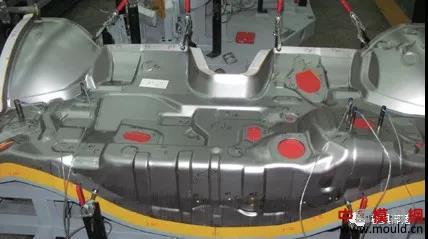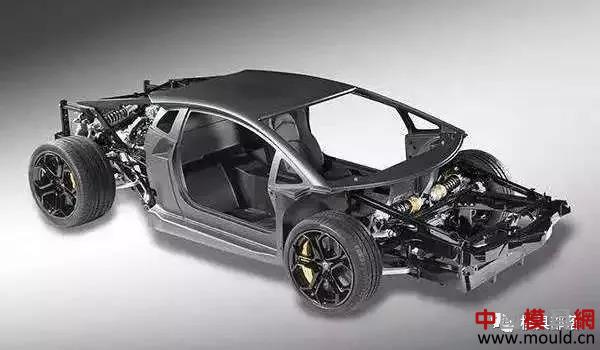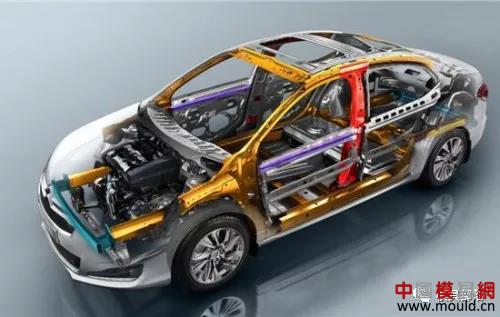In recent years, the automotive industry has been constantly rising. With the continuous development of the market, people are increasingly demanding the performance and quality of automobiles. However, in the automobile manufacturing process, due to various reasons, the research and development cycle of the automobile is prolonged, and the manufacturing is also very difficult. This also has a certain impact on the overall manufacturing progress and level of the automobile, among which the manufacture of automotive stampings. Is an important part of the impact of automotive manufacturing, so all car manufacturers have gradually attached importance to the automotive stamping parts of the research and manufacturing. In the manufacturing process of automotive stamping parts, various links need to be closely coordinated to effectively avoid various problems that may occur in the production process of stamping parts. Problems that arise in the production process include rebound problems, so how to effectively handle the problems The issue of bombs is also an aspect of improving the overall accuracy of automobiles. The following will briefly analyze the types of rebound problems in automotive stampings, the causes of rebound problems, and the factors that affect rebound. First, the type of automotive stamping parts rebound defect The first is the distortion defects, including the distortion of the shape, the distortion of the shallow pull piece, the distortion of the multi-curve shape, etc. Due to the punching force during the processing, it will cause the shape of the stamped part to be distorted during the process, during the blanking process, The blanking clearance is unreasonable, so that one side of the material is compressed and the other side is pulled, so that the stamping part may be distorted in shape during manufacture. There is also a large curve change defect. The reason for this is that the stress is different in places where the material is thicker. There are also warpage defects, which may be ribs or faces. The reason for this is that gap forces and reaction forces are not in a straight line, resulting in moments, or some mold gaps are too large. There are many other problems, such as positive and negative springback defects. These defects will have a certain impact on the quality and accuracy of stamping parts, and some can not even be used, so improve the production process to identify the defects of the automotive stamping parts rebound The reason is very necessary. Second, the impact of rebound factors (I) Material properties Within the elastic limit of the material, the greater the degree of deformation of the material, the higher the yield limit, the greater the elastic modulus of the material, so that in the processing of the material, the greater the elastic modulus of the material, the greater the bending deformation of the material rebound. Larger, work hardening will be more serious, if the smaller the elastic modulus of the material, then the degree of rebound in the process of the process will be smaller, the stronger the ability to resist elastic deformation. (b) Bending Center Angle The larger the value of the bending center angle, the greater the springback cumulative value, which will cause a serious rebound phenomenon. The length of the stamping part deformation increases with the bending center angle. (III) Mold clearance coordination When designing the mold, it is necessary to leave a gap of one-time thickness in the relative working part to accommodate the product in the gap. In order to achieve a better flow of material, after the mold is processed, parts of the mold must be assembled. In particular, in the bending die, the greater the clearance at the working part is, the larger the rebound is. If the allowable range of the sheet thickness is larger, the springback will be larger and the clearance between the die will not be able to be well. determine. (d) Relative bending radius The value of the relative bending radius is proportional to the rebound value. Therefore, the larger the curvature of the stamping part, the more difficult it is to bend and shape. (five) part shape Different parts have different possibilities of springback. When a complicated bending stamping part is bent once, the stamping parts will be changed due to the mutual restraint of the stamping parts during the forming process and the friction between the mold and the material. The stress state of each part changes the rebound amount. (6) Forming process The forming process of the stamping part is an important aspect that restricts its rebound value. In general, the effect of correcting the bending rebound is better than that of free bending. If the same processing effect is to be achieved in the production of the same batch of stamped parts, the bending force required to correct bending is much greater than that required for free bending. Therefore, if the same bending force is used in both methods, the final effect is also different. The correction force needed to correct the bending is greater, and the rebound of the stamping part is smaller, and the correction bending force will cause the fibers outside the deformation area to be elongated to reach the forming effect. After the bending force is unloaded, the inner and outer fibers will be shortened, but the inner and outer rebound directions are opposite, so that the outward rebound of the stamping parts can be relieved to some extent. Third, the solution to the rebound defect (I) Product Design Section The first is material. The material plays an important role in the manufacturing process of stamping parts. The materials used for stamping parts have a great influence on their quality. Under the premise of satisfying the requirements of the products, we must choose materials with small yield or The thickness of the material can also be increased appropriately. Followed by the design of the stamping part shape, the stamping part's shape also has a very important impact on its rebound. The bending part of the complex stamping part in one bending, due to the complex situation of stress in all directions, there are other factors such as friction, back Elimination is very difficult, so in the design of the product's shape, for complex stampings, several combinations of components can be used to solve the rebound problem. In addition, anti-rebound ribs can be provided, and springback defects can also be effectively solved. In the premise of satisfying the requirement of the stamping parts, the anti-rebound ribs can be set in accordance with the requirements of the product and the amount of springback, and the product shape can be changed. Finally, springback defects can also be resolved by reducing the value of the R angle of the bend. (B) Process Design The first is the pre-molding process of mold design. Adding the preforming process can distribute the stamped parts that are formed at one time in different processes and can eliminate the internal stress in the molding process to a certain extent, thereby solving the rebound defect. The second is to reduce the gap between the concave and convex molds, which can be adjusted to about one-time material thickness, so that the material and the mold to the maximum degree, while hardening the mold, but also can effectively reduce the stamping parts pull phenomenon, reduce the Mold wear. There is also shaping the product. If the design of the product cannot be arbitrarily changed, the stamping part can be shaped at the end. This is the last resort. Finally, there are other methods to solve the rebound defect, such as the use of hydraulic stamping equipment, punch setting footer, etc., can solve the rebound defect to a certain extent. In a word, the problem of springback of stamping parts is a major problem in automobile manufacturing. It is also a very complicated issue. How to solve the rebound problem better still requires the unremitting efforts of technicians. Through continuous exploration and hard work, we have come to practice. Experience, and a detailed analysis of the summed up experience, to find out the factors that affect the rebound, and find a practical and effective method to solve the rebound defect, and comprehensively rectify the production process, so that the quality of stamping parts can be improved. 180 M3/h Concrete Batching Plants
It is assembled by building blocks, which is short, quick and convenient.It is convenient and quick to use the cylinder discharge or electric push rod to discharge.It is assembled by building blocks, which is short, quick and convenient.It is convenient and quick to use the cylinder discharge or electric push rod to discharge.A variety of mixing processes, highly automated, high production efficiency,Environmental protection and energy saving, using pulse dust removal, recycling waste-water for reuse.This product(concrete batching plant) is a fully automatic concrete mixing equipment consisting of five systems of mixing, electrical control, storage, conveying and weighing.This product(concrete batching plant)mainly consists of 5 major systems such as mixer, material weighing system, material conveying system, material storage system and control system and other ancillary facilities.
This product(concrete batching plant) is equipped with the storage, batching, conveying, stirring, control and other devices of various raw materials required for precast concrete, and various aggregates, powders, admixtures, water, etc. A complete set of equipment for supplying concrete in a concentrated manner than by a mixer. 180M3/H Concrete Plant Machine,Hzs180 Concrete Batching Plant,180M3/H Concrete Mixing Plant,180M3/H Concrete Mixing Plant Machine Shandong Zeyu Heavy Industry Science and Technology Co.,Ltd. , https://www.sdjzcseriesdrumconcretemixer.com



